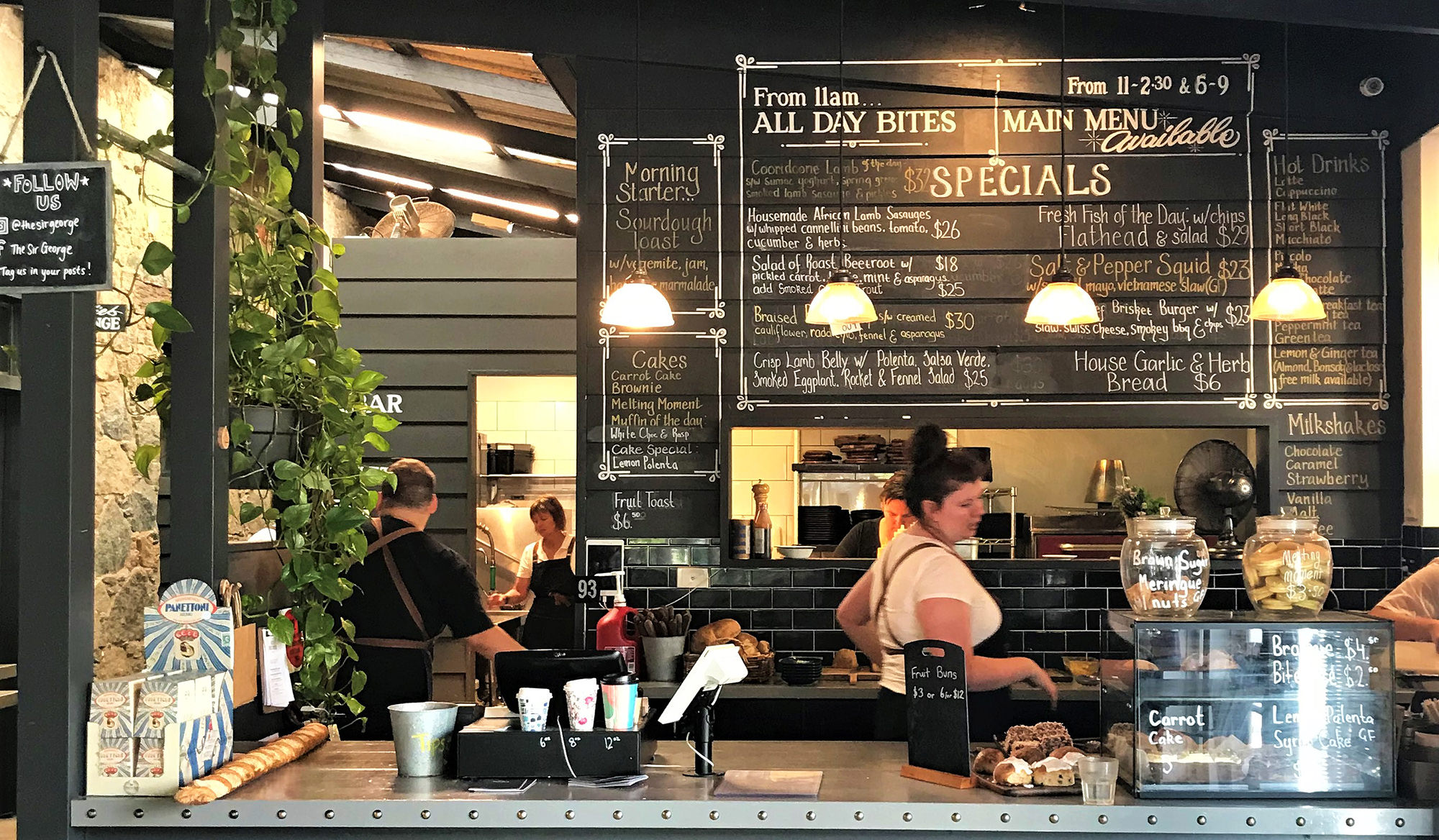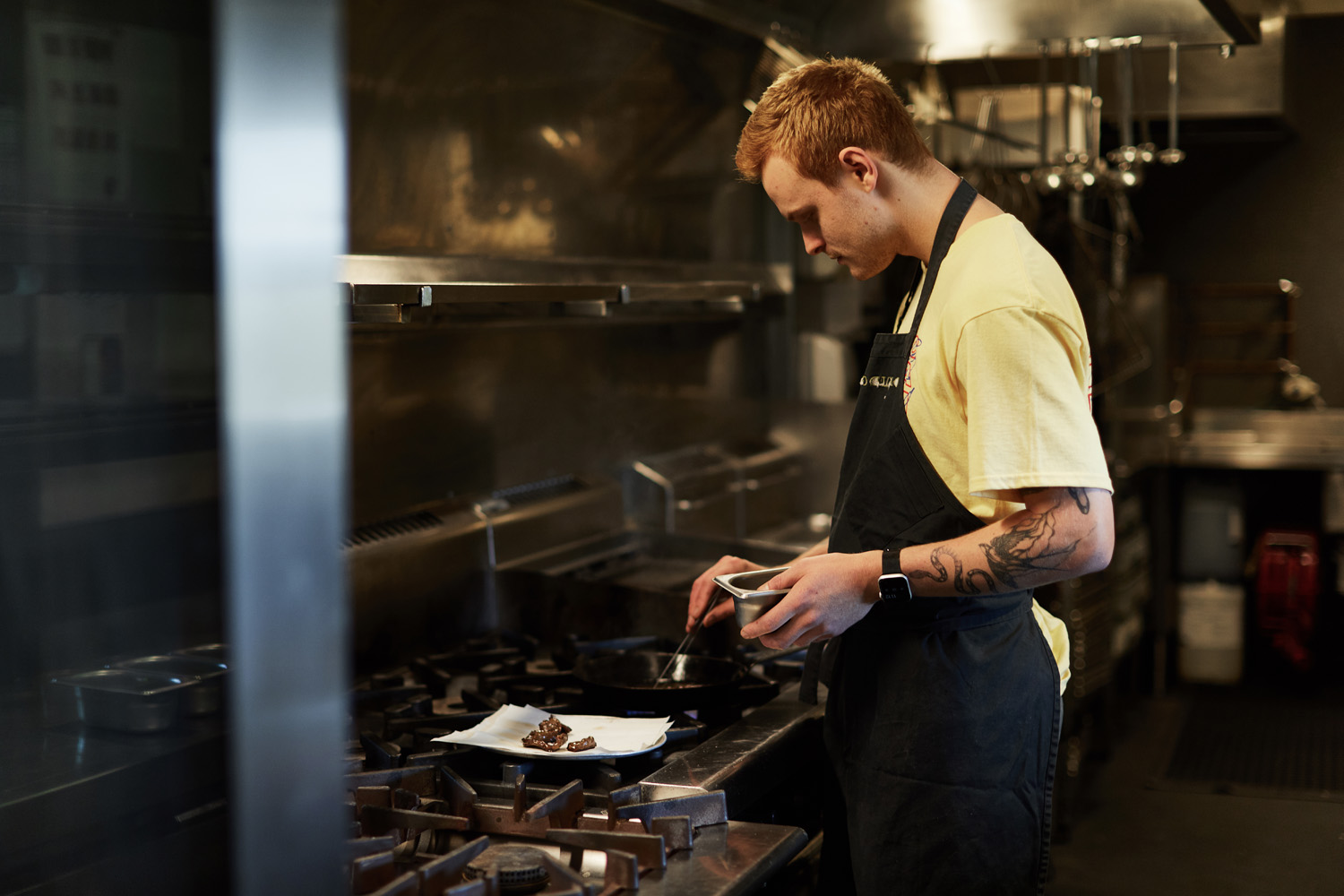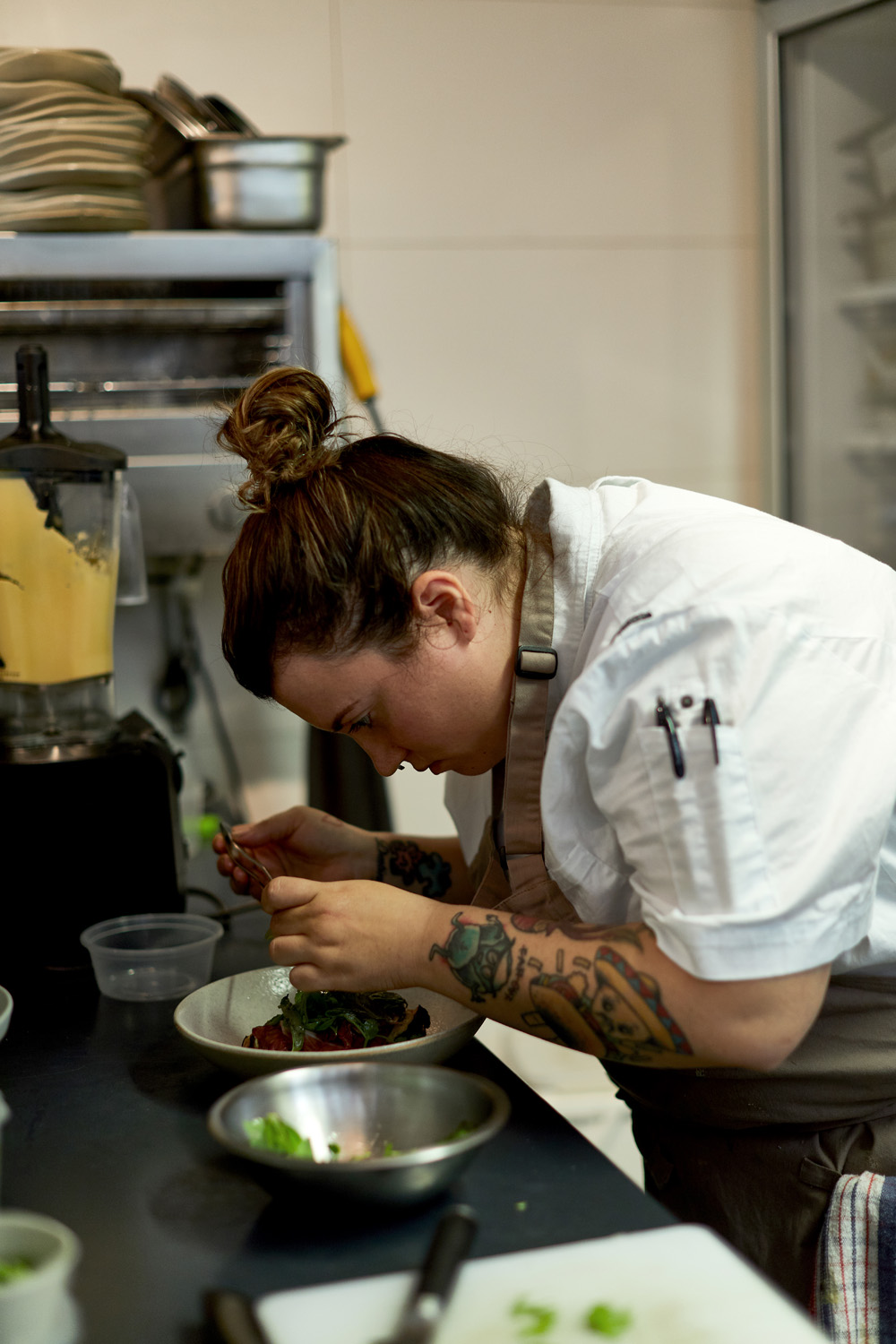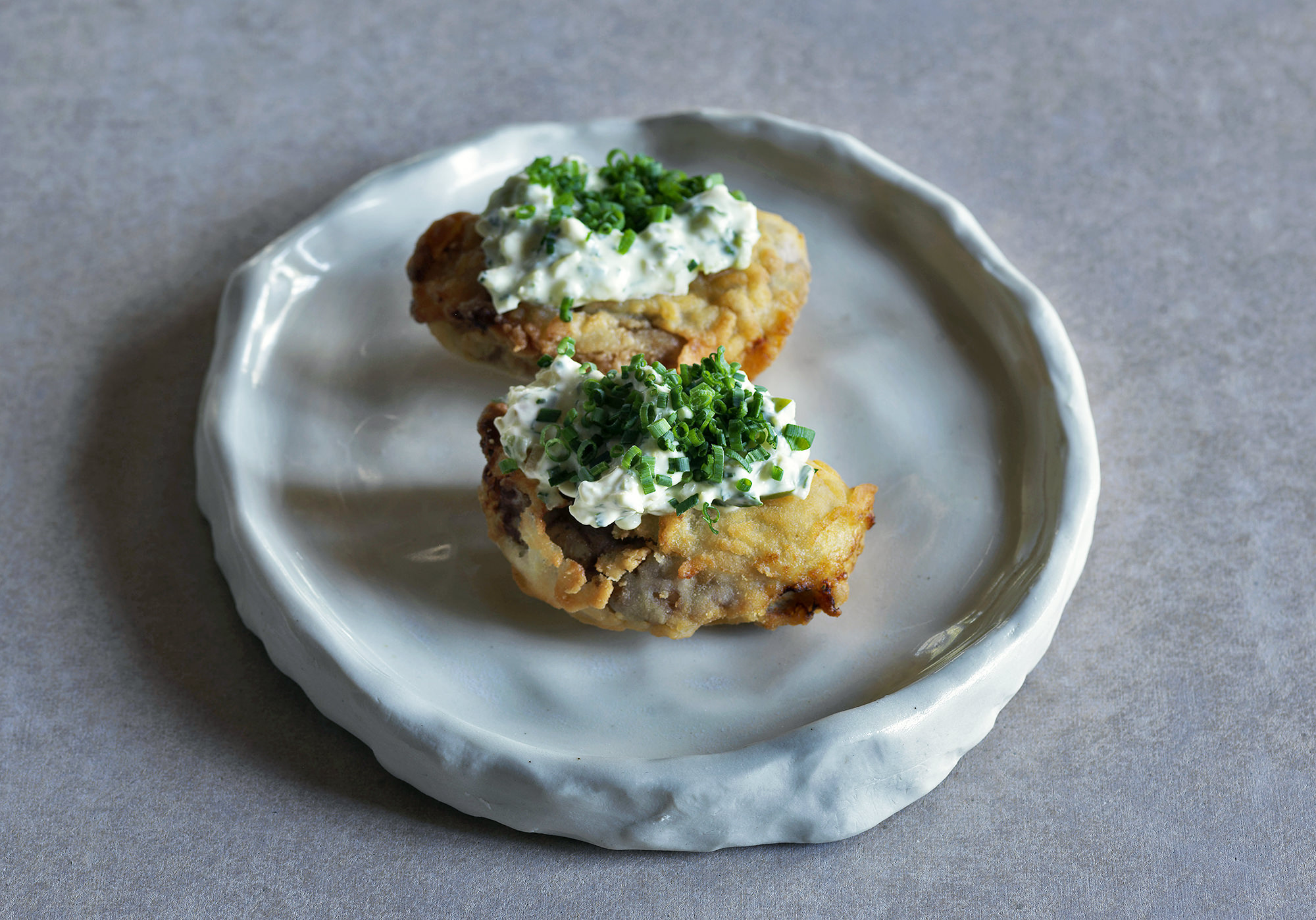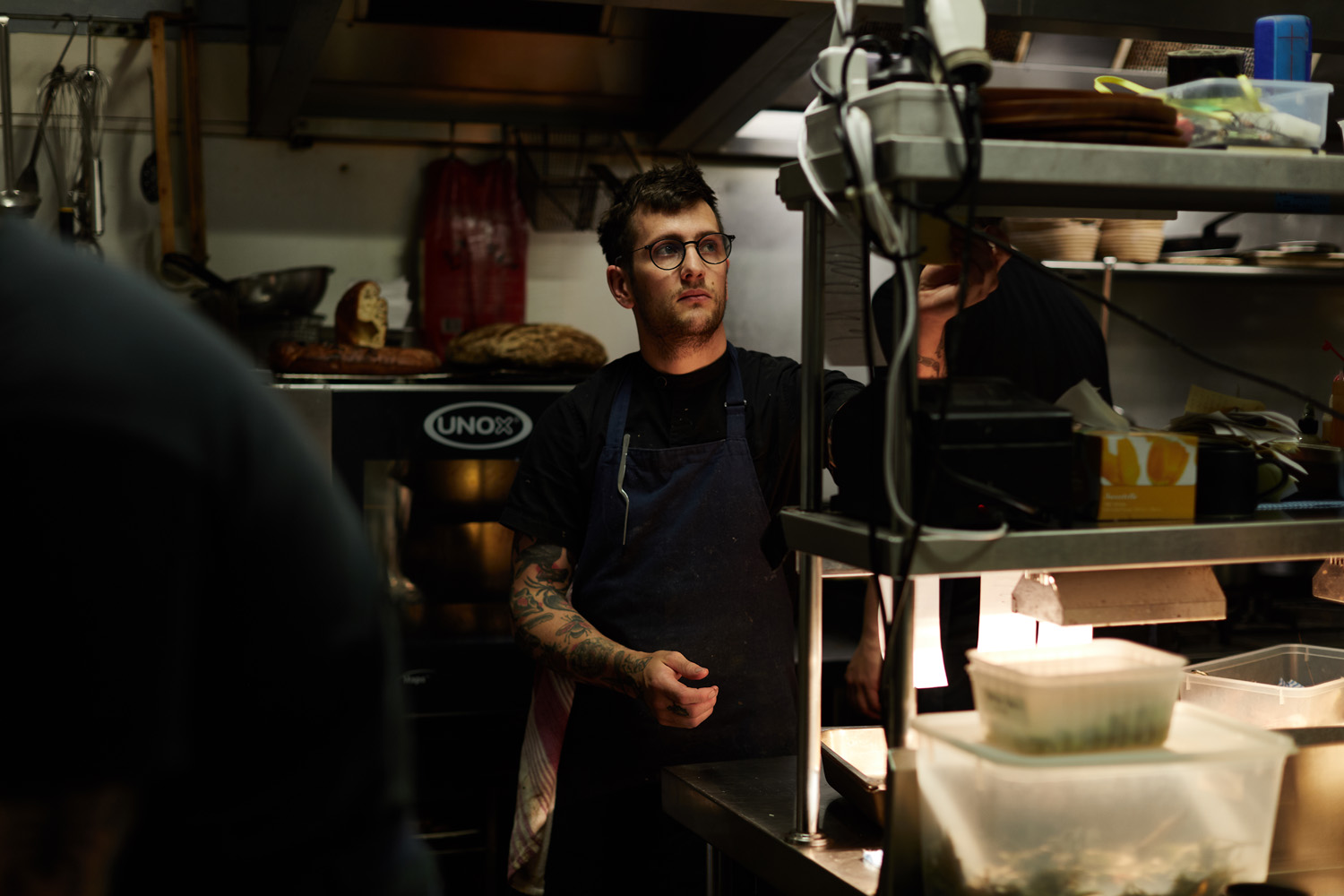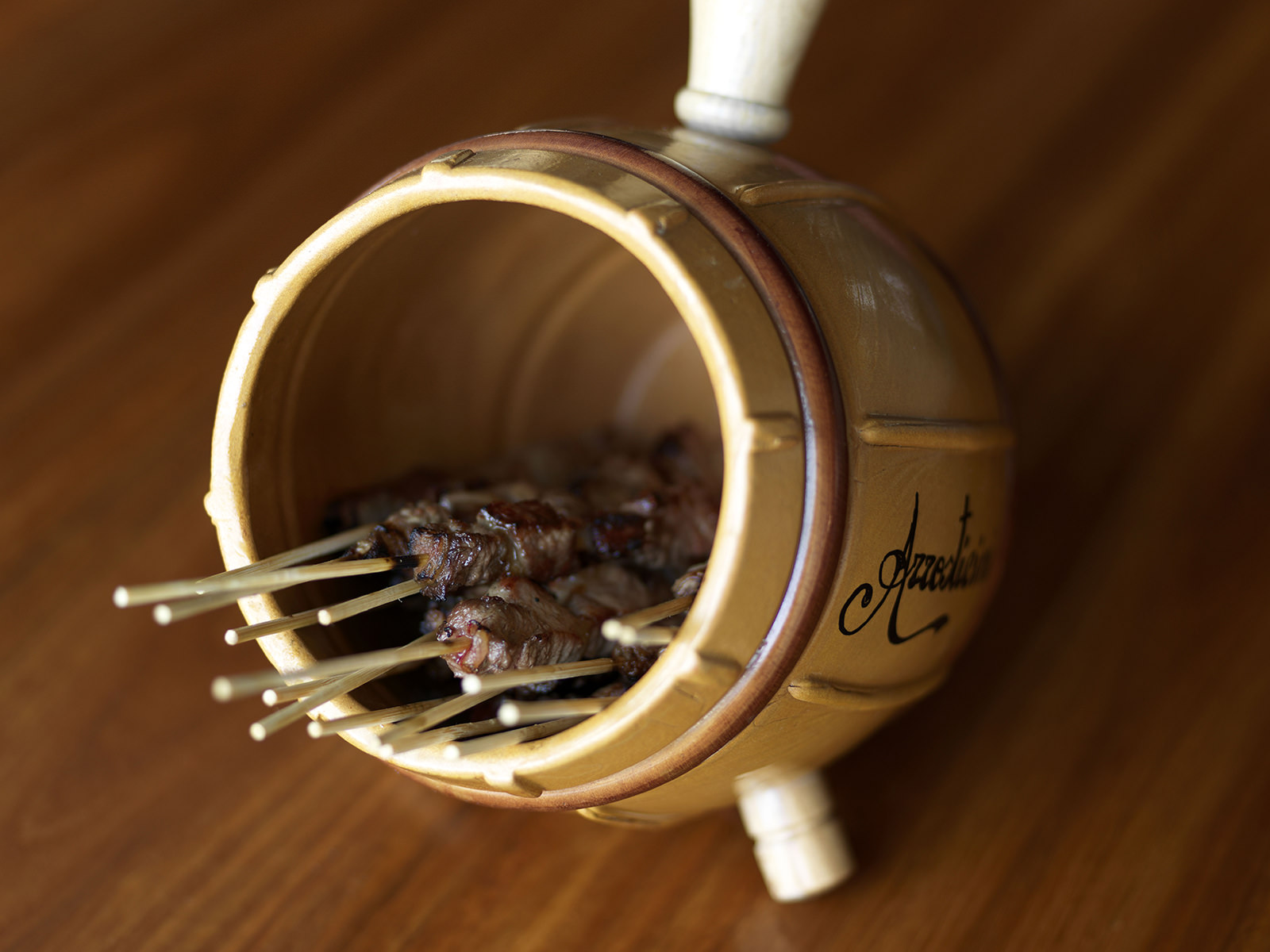Editors’
Letters
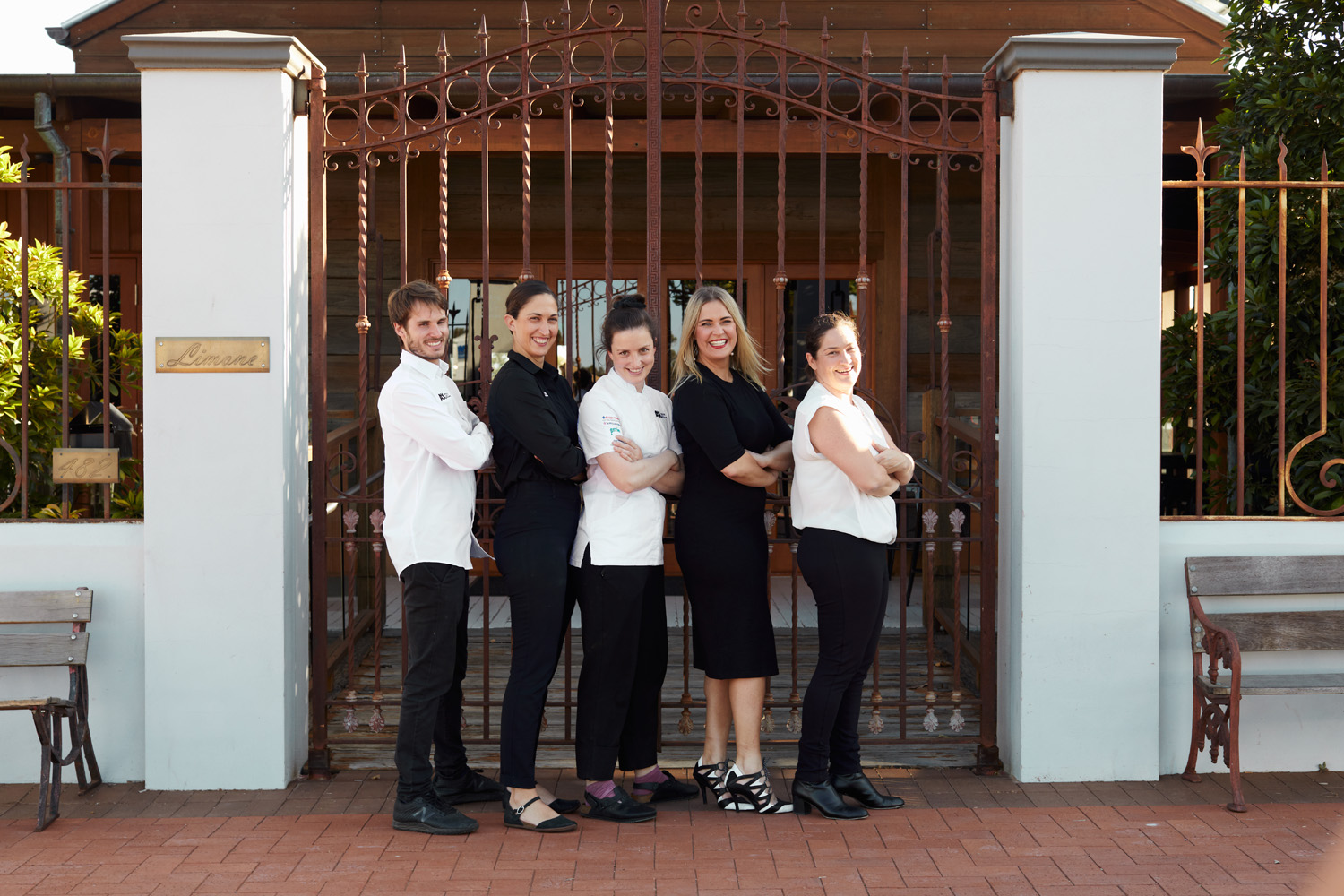
2019 Appetite For Excellence winners Luke Piccolo, Olivia Evans and Bianca Johnston with MJ from Rare Medium and Lucy Allon from A4X.
This issue could just be my proudest to date. Focusing on the next generation of foodservice leaders, it tells the stories of a swathe of young, passionate and incredibly talented individuals who I cannot thank enough for the energy and enthusiasm they have poured into its pages.
Fostering the next generation is essential in the forward trajectory of any industry and the Australian foodservice community looks set to flourish in the hands of those featured within this issue and other young professionals like them around the country. Their ideas, their ethos and their inherent care for food, food production and each other paves a new way for the future of food.
Just as inspiring has been our journey into regional areas for this issue and the dedicated celebration and championing of local produce we have found there. As much of the country continues to struggle with one of the worst droughts in Australian history, never has it been more vital to support our regional communities and with the exceptional hospitality on offer, never has there been more reasons to go and do so.
Our guest chef editor, 2019 Appetite for Excellence Young Restauranteur of the Year Luke Piccolo, effortlessly brings together both key themes of this issue – an extraordinarily talented young chef and restaurateur bringing elevated dining to regional Australia while shining a spotlight on seasonal and local produce the way nature intended.
We visit one of Luke’s local suppliers, lamb producer Sally Jones, whose approach to regenerative farming to foster soil health and promote multi species plant growth – ensures the quality of her flock of Dorper sheep despite the incredibly difficult seasonal conditions. Sally and Luke have worked together for four years, maintaining an open dialogue of feedback that has allowed Sally to continually improve her end product. Again, this connection between chef and producer is such a crucial component of supply chain success and cannot be underestimated.
Finally – the crowning glory of this issue was the opportunity to bring together the three winners of the 2019 Appetite for Excellence program – Young Restaurateur Luke Piccolo, Young Chef Bianca Johnston and Young Waiter Olivia Evans for a special collaborative dinner in Griffith. This culmination of next generation talent worked together to pull off a faultless evening that showcased regional lamb, produce from the Piccolo Family Farm and locally sourced beverages in a stunning event that sold out in under two hours.
Here’s to the next generation of our fabulous foodservice community – this issue is for you. A celebration of and a nod to your commitment and passion to your chosen career paths and your enthusiasm and interest in understanding and championing producers and farmers.
Mary-Jane Morse
Meat & Livestock Australia
[email protected]
@_raremedium
What a pleasure to be co-editor of this great mag. I knew from the first conversation I had with MJ that this would be a heap of fun.
This year has been a whirlwind for my team and I, being named the Appetite for Excellence Young Restaurateur of the Year was an unexpected highlight. The Appetite program was the start of my relationship with MJ and Rare Medium and it’s been great to foster this further through the making of this issue.
MJ’s idea to highlight this year’s Appetite for Excellence alumni shows her amazing commitment to the next generation of our industry. Seeing the quality dishes from each of the chefs affirms that they truly are a talented bunch. Being able to work with Bianca and Olivia on the collab dinner was a buzz, to share our restaurant with them and have it come alive with their energy and ideas. They worked with our team seamlessly and I’ve never seen my staff brimming with excitement like they were that night.
I’m passionate about regional areas and it was an absolute blast hanging with MJ and Macca on the Roadies tour seeing first-hand the considerate and driven people producing quality lamb dishes and delivering extraordinary hospitality. A couple of highlights were munching on one of the best lamb pies I’ve ever tasted over an ice-cold Reschs in the Binalong pub and a night at the Sir George in Jugiong, a town of 150 people that pulls people off the Hume highway in hoards to check out their immaculately renovated venue and eat their delicious food.
There was one common theme for me in the making of this issue, it’s that food and hospitality are the mesh that hold together our regional communities. It’s evident locally in our community of Griffith and we are proud to be doing our bit to create a strong dining and food culture in this vibrant area.
Cheers to MJ and crew for inviting me on this journey.
Luke Piccolo
Chef & Owner
Limone Dining
@lukepiccolo_
Copyright: this publication is published by Meat & Livestock Australia Limited ABN 39 081 678 364 (MLA).
























